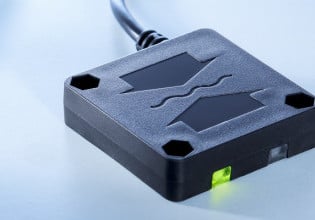Fluid Control, Plastics, and Flexibility: Festo Expands Manifold Catalog
Diffusion bonding is a process used extensively in medical and lab manufacturing. Festo is expanding its micro-fluidic distribution portfolio by providing customized, efficient, space-saving designs.
Micro-fluidic distribution assemblies have been given an acceleration to market with Festo’s recent announcement of the addition of diffusion-bonded manifolds, joining an already extensive catalog of gas and fluid control components targeted for laboratory and health science applications.
What Is a Diffusion-Bonded Manifold?
In typical micro-fluid (gas and liquid) control assemblies, small flexible tubes are routed between all the various valves, flow controls, actuators, and distribution components. This is quite similar to the larger pneumatic and hydraulic systems found throughout industrial automation, but these medical/lab assemblies tend to rely on much smaller devices with much higher device footprint density.

Acrylic (plexiglass) materials can be created in layers and then bonded to create amazingly complex 3D shapes. Image used courtesy of Festo
To simplify the routing of the fluids, passageways are designed directly into layers of acrylic plexiglass or Ultem with a tight tolerance and resistance to the chemicals present in the fluid medium. The layers are then bonded consecutively to create a 3D assembly, with passageways crossing over and under each other, just like a multilayered printed circuit board (PCB).
The designs for these manifolds incorporate threaded holes for the attachment of small quick-connect fittings and valve banks, reducing a complex bulk of tubed passageways into one simple, robust block.
Festo’s Portfolio Expansion
Customers have long since been able to order small control and connection devices from Festo and have relied on other industry-leading manufacturers, such as Carville Plastics, to supply bonded manifolds. However, in a recent announcement from Festo, news was shared that Carville will close its business in the upcoming months, and Festo will resume production of diffusion bonded manifold solutions for customers.
This announcement and upcoming change will positively affect customers by reducing the number of steps required to design and procure an assembly. Combining these manifolds with Festo’s quick-connect threaded fittings, along with the VYKA, VYKB, and VYKC series of media-separated solenoid valves, will provide customers with a one-stop shop for medical and lab device integration.
Features of Bonded Manifolds
The manufacturing of acrylic and Ultem materials can provide extremely small feature dimensions of down to 150 microns for precise fluid motion. The choice of materials can depend on the fluid medium, as Ultem may be preferred for reactions with certain processes.

Diffusion-bonded layered manifolds can be designed in colors other than clear, perhaps for high-contrast optical measurement or simply for creativity in design! Image used courtesy of Carville
Acrylic has the advantage of being ultra-transparent for optical measurements, as well as colorable so that a manifold can be designed in a company-branded color or in differing layer colors for high-contrast examination.
Due to the stable single-block constructions, there is no danger of loose or leaking tube connections as are present in so many traditional assemblies, leading to hours of downtime for repairs.
Leading Designs for Medical and Lab Industries
Festo is committed to providing cutting-edge solutions for laboratory and medical devices, and the announcement of bonded layer manifolds is the most recent example of easing the process of design and manufacturing for these critical fields of study around the globe.






